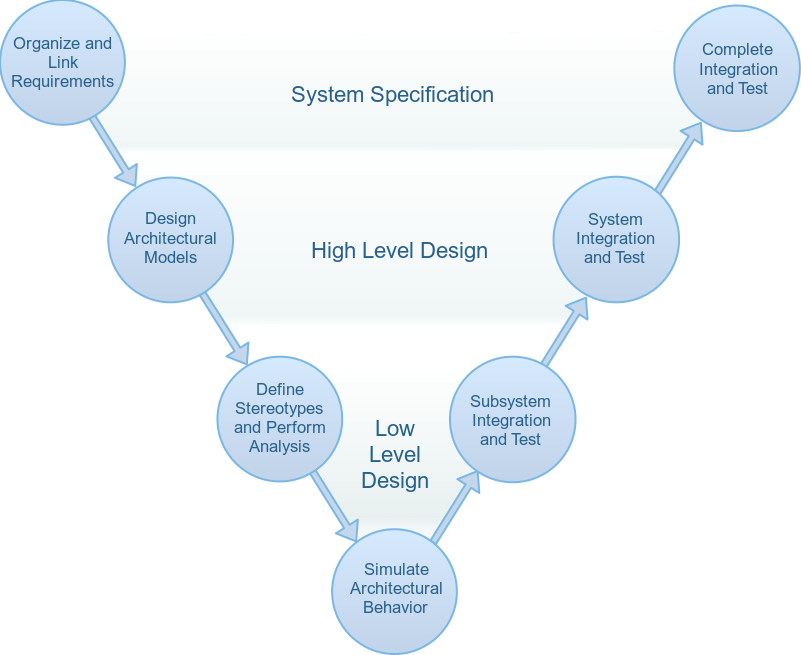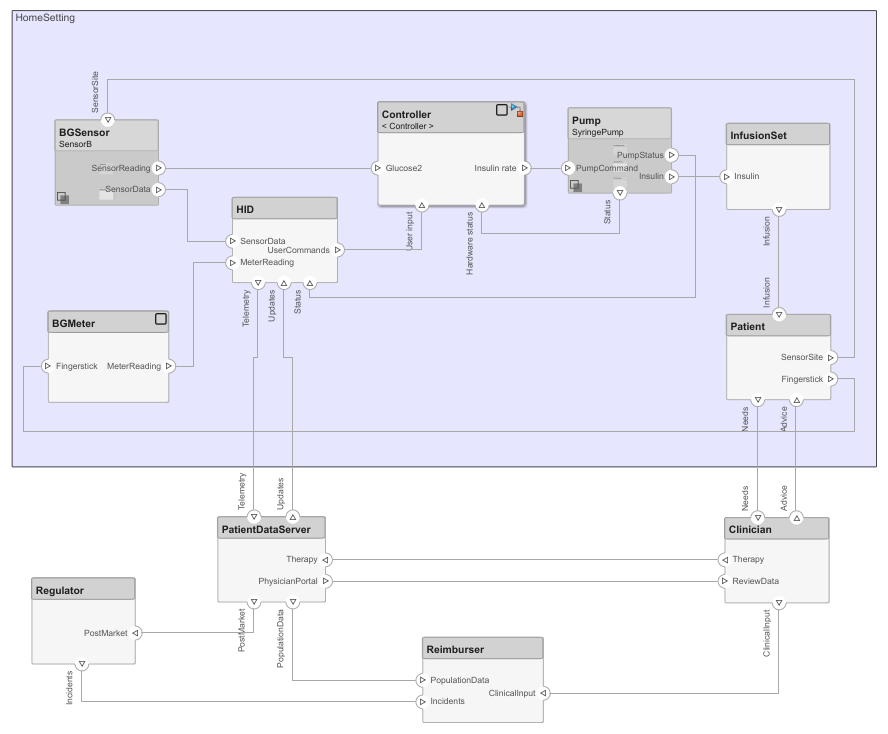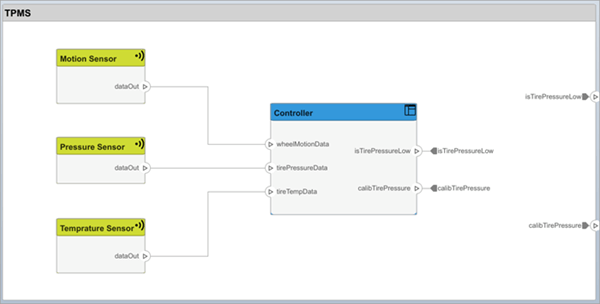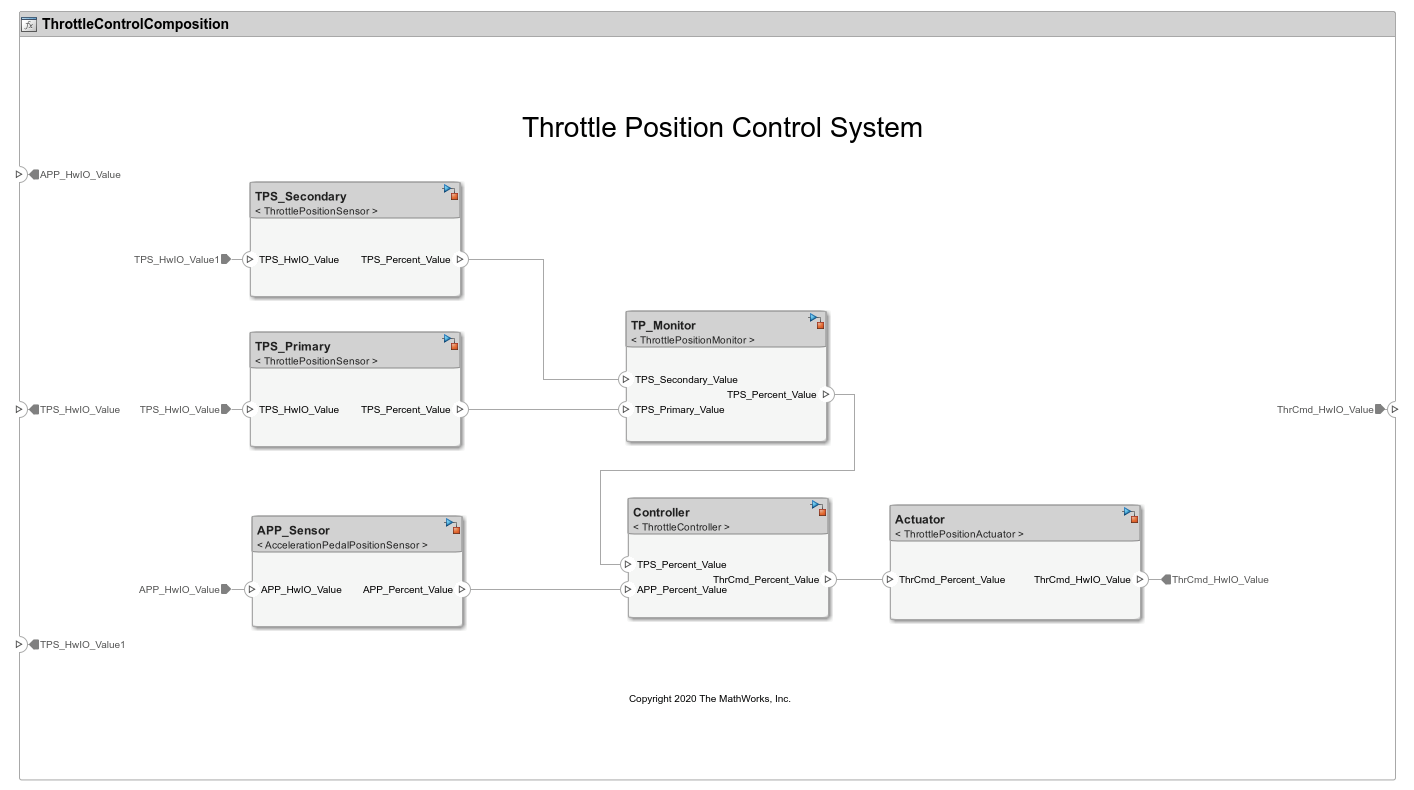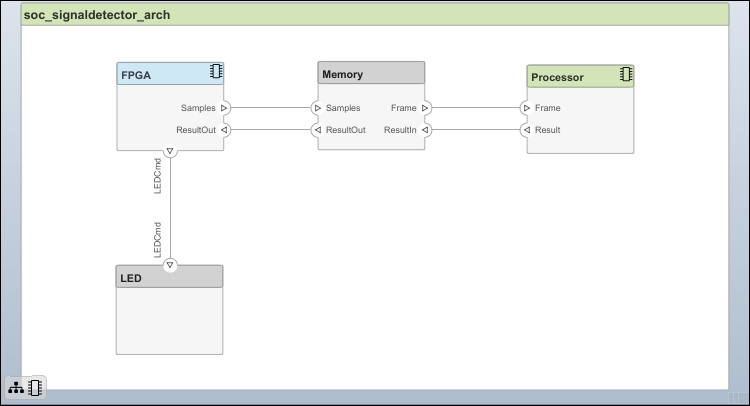Systems Engineering
For systems engineering, use System Composer™ to model architectures and component behaviors that represent and simulate your system. The workflow in System Composer involves capturing stakeholder needs into system-level requirements and then using them to drive your architectural design through behavior models. With System Composer, you can:
Compose an architecture model with components, ports, and connectors.
Extend the modeling language to capture metadata and style the architectural elements using stereotypes.
Define data, physical, or client-server interfaces on ports and use connectors to describe component interaction.
Capture component interface, including port interfaces and parameters.
Generate architecture views by using filters based on elements or property values.
Represent your system in a sequence diagram to describe system behavior as a sequence of interactions.
Establish directed relationships between functional, logical, and physical architectures using allocations.
Perform analyses and trade studies to optimize your architectural design.
By adding Requirements Toolbox™, you can define functional and design requirements and link them to System Composer components and ports. Use Requirements Toolbox together with Simulink® Test™ to automatically verify requirements by creating links to test cases. Simulink, Stateflow®, and Simscape™ can also describe component behaviors in an architecture model.
With all of these tools, you can create and manage the requirements and functional, logical, and physical architectures throughout the lifecycle of your program.
Products for Systems Engineering
Topics
Model-Based Systems Engineering
- Compose and Analyze Systems Using Architecture Models (System Composer)
Define architectures, add metadata, perform analyses, view component dependencies, and implement behaviors. - Modeling System Architecture of Small UAV (System Composer)
Set up and refine the architecture of a small unmanned aerial vehicle. - Describe System Behavior Using Sequence Diagrams (System Composer)
Learn about and interact with sequence diagrams in System Composer. - System Composer Report Generation for System Architectures (System Composer)
Full report generator script for architectures.
System Architecture Modeling
- Compose Architectures Visually (System Composer)
Create architecture models using built-in model element types, such as components, ports, and connections. - Define Port Interfaces Between Components (System Composer)
Learn about port interfaces that define the connections between components. - Extend System Composer Language Elements Using Profiles (System Composer)
Extend architectures by defining stereotypes in profiles to apply to model elements with property values.
Requirements and Tests
- Allocate and Trace Requirements from Design to Verification (System Composer)
Link, trace, manage, verify, and validate requirements. - Visualize Links with Traceability Diagrams (Requirements Toolbox)
Visualize the traceability structure of requirements and other Model-Based Design items with traceability diagrams. - Analyze Formal Requirements of an Electric Vehicle Charger Locking Mechanism (Requirements Toolbox)
Use a Requirements Table block and Simulink Design Verifier™ to construct, analyze, and update formal requirements of an electric vehicle charging station locking mechanism. (Since R2022a) - Track Requirement Links with a Traceability Matrix (Requirements Toolbox)
Track and manage links and change issues with the Traceability Matrix. - Review Requirements Verification Status (Requirements Toolbox)
Use the requirements verification status to check test and analysis results linked to your requirements.
Component Behavior
- Implement Component Behavior Using Simulink (System Composer)
Associate components with behavior models in Simulink. - Implement Component Behavior Using Simscape (System Composer)
Associate components with physical behavior in Simscape. - Implement Component Behavior Using Stateflow Charts (System Composer)
Associate components with state machine behavior in Stateflow.
Analysis, Trade Studies, and Views
- Analyze Architecture (System Composer)
Perform static analysis on a System Composer architecture to evaluate characteristics of the system. - Simple Roll-Up Analysis Using Robot System with Properties (System Composer)
Perform a simple roll-up analysis for a robot using System Composer analysis tools. - Modeling System Architecture of Keyless Entry System (System Composer)
Use a keyless entry system for a vehicle to create architecture views for different stakeholder concerns. - Calculate Endurance Using Quadcopter Architectural Design (System Composer)
Design quadcopter by calculating endurance using System Composer analysis.
